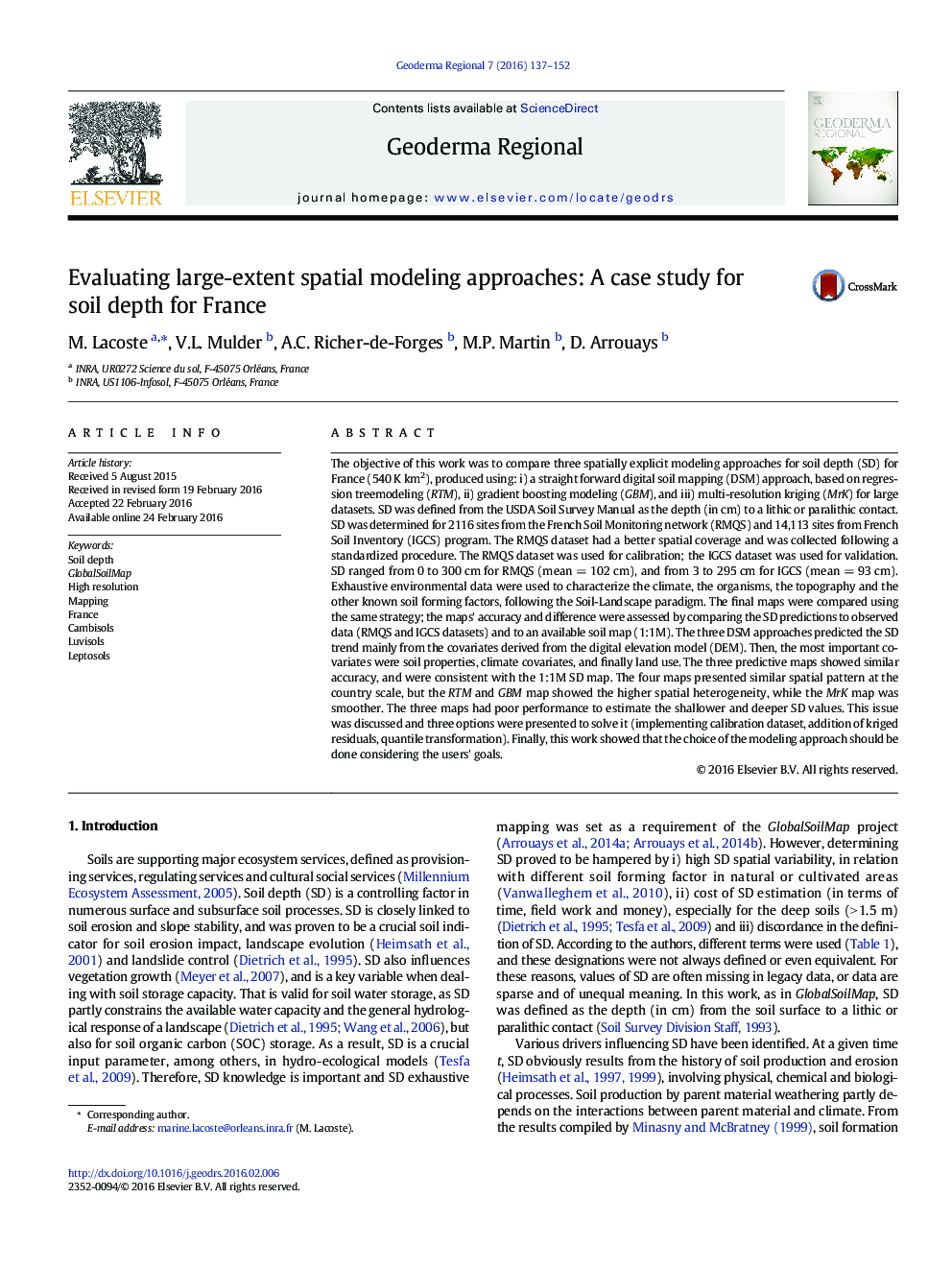| کد مقاله | کد نشریه | سال انتشار | مقاله انگلیسی | نسخه تمام متن |
|---|---|---|---|---|
| 4480766 | 1316744 | 2016 | 16 صفحه PDF | دانلود رایگان |
• Soil depth was predicted at high resolution, at the country level for France.
• Three modeling approaches of soil depth were compared and gave consistent results.
• The soil depth maps differed in their ability to capture spatial heterogeneity.
• The choice of the modeling approach should be done according to the users' goals.
The objective of this work was to compare three spatially explicit modeling approaches for soil depth (SD) for France (540 K km2), produced using: i) a straight forward digital soil mapping (DSM) approach, based on regression treemodeling (RTM), ii) gradient boosting modeling (GBM), and iii) multi-resolution kriging (MrK) for large datasets. SD was defined from the USDA Soil Survey Manual as the depth (in cm) to a lithic or paralithic contact. SD was determined for 2116 sites from the French Soil Monitoring network (RMQS) and 14,113 sites from French Soil Inventory (IGCS) program. The RMQS dataset had a better spatial coverage and was collected following a standardized procedure. The RMQS dataset was used for calibration; the IGCS dataset was used for validation. SD ranged from 0 to 300 cm for RMQS (mean = 102 cm), and from 3 to 295 cm for IGCS (mean = 93 cm). Exhaustive environmental data were used to characterize the climate, the organisms, the topography and the other known soil forming factors, following the Soil-Landscape paradigm. The final maps were compared using the same strategy; the maps' accuracy and difference were assessed by comparing the SD predictions to observed data (RMQS and IGCS datasets) and to an available soil map (1:1M). The three DSM approaches predicted the SD trend mainly from the covariates derived from the digital elevation model (DEM). Then, the most important covariates were soil properties, climate covariates, and finally land use. The three predictive maps showed similar accuracy, and were consistent with the 1:1M SD map. The four maps presented similar spatial pattern at the country scale, but the RTM and GBM map showed the higher spatial heterogeneity, while the MrK map was smoother. The three maps had poor performance to estimate the shallower and deeper SD values. This issue was discussed and three options were presented to solve it (implementing calibration dataset, addition of kriged residuals, quantile transformation). Finally, this work showed that the choice of the modeling approach should be done considering the users' goals.
Journal: Geoderma Regional - Volume 7, Issue 2, June 2016, Pages 137–152
